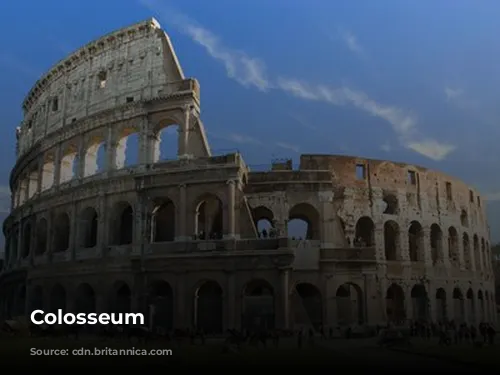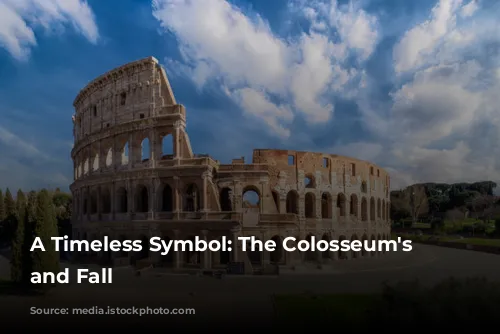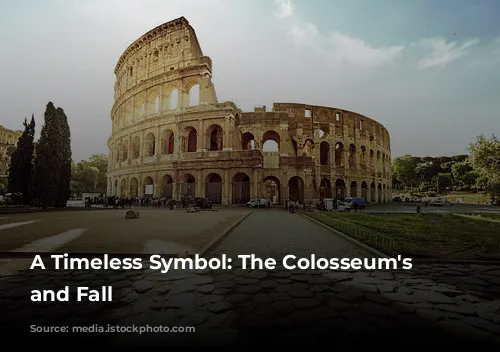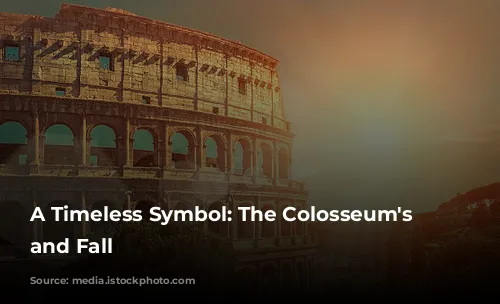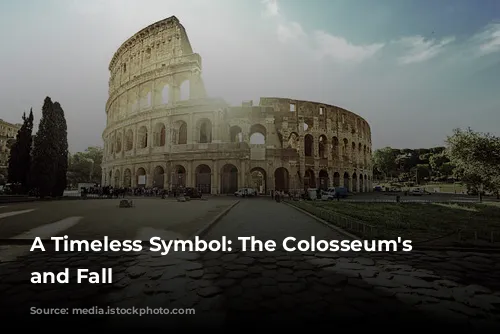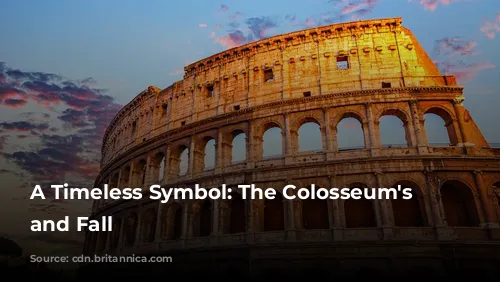The Colosseum, standing as a powerful symbol of ancient Rome, is a testament to the architectural and engineering genius of the past. It’s not just a breathtaking structure; it’s also a significant source of revenue for the Italian government. In 2018 alone, the Colosseum, Roman Forum, and Palatine Hill raked in over $63.3 million (€53.8 million), making it the top tourist attraction in Italy. This ancient wonder continues to captivate and attract visitors from around the world.
A Legacy of Transformation
The Colosseum’s journey has been as fascinating as its construction. After the fall of the Western Roman Empire, this magnificent structure faced a period of neglect. During the 12th century, it was repurposed as a fortress by powerful families like the Frangipane and the Annibaldi. Sadly, the Colosseum was later used as a quarry in the late 15th century by Pope Alexander VI, highlighting the devastating effects of neglect. It wasn’t until the 1990s that state-funded restoration efforts breathed life back into this ancient monument.
A Legacy of Entertainment
The Colosseum’s construction began during the reign of Emperor Vespasian between 70 and 72 CE. This monumental project was driven by a desire to revitalize Rome following a tumultuous period. Like other amphitheaters of its time, the Colosseum was envisioned as a hub of entertainment, hosting thrilling gladiatorial contests, exotic animal hunts, and even mock naval battles.
A Legacy of Construction
Vespasian’s son and successor, Titus, dedicated the completed Colosseum in 80 CE. Emperor Domitian added the fourth story in 82 CE, completing the magnificent structure. Notably, the arena’s construction was financed by the spoils of war from Titus’s conquest of Jerusalem in 70 CE. It’s important to acknowledge that the Colosseum was built using the labor of enslaved Jews from Judea.
A Legacy of Magnificence
The Colosseum, also known as the Flavian Amphitheatre, is an elliptical masterpiece constructed from stone, concrete, and tuff. Rising four stories high, it spans 620 by 513 feet (189 by 156 meters) and could accommodate up to 50,000 spectators. This architectural marvel was renowned for its gladiatorial combat, showcasing the strength and skill of these warriors.
A Legacy of Symbolism
The Colosseum’s construction is a story of symbolism and power. It was built on the site of Nero’s Golden House, replacing the emperor’s private lake with a public amphitheater. This act was a powerful statement by Vespasian, a humble emperor who aimed to provide a space for the public’s enjoyment.
A Legacy of Engineering
Unlike earlier amphitheaters, which were often built into hillsides, the Colosseum is a free-standing structure. It utilizes a complex system of barrel vaults and groin vaults, showcasing Roman engineering prowess. The Colosseum’s three main stories are adorned with arcades framed by engaged columns in the Doric, Ionic, and Corinthian orders. This architectural arrangement became a key influence in Renaissance design.
A Legacy of Spectacle
The Colosseum provided a breathtaking spectacle for its vast audience. A massive retractable velarium (awning) protected spectators from the sun. Hundreds of Roman sailors were responsible for operating the rigging that extended and retracted this massive awning, showcasing the meticulous planning and execution of this impressive structure.
A Legacy of Resilience
The Colosseum, despite its resilience, has faced its share of challenges. In medieval times, it was repurposed as a church and later as a fortress by powerful families. It has also suffered from lightning strikes, earthquakes, vandalism, and pollution. The marble seats and decorative elements vanished over time, leaving the Colosseum in a state of neglect.
A Legacy of Preservation
The preservation of the Colosseum gained momentum in the 19th century, with notable efforts led by Pope Pius VIII. In the 1990s, a dedicated restoration project breathed new life into this ancient wonder. Today, the Colosseum stands as one of Rome’s most popular tourist attractions, welcoming millions of visitors annually. It continues to offer insight into the culture of ancient Rome through its changing exhibitions.
A Lasting Legacy
The Colosseum’s legacy is one of resilience, grandeur, and enduring fascination. From its humble beginnings to its modern-day status as a global icon, this magnificent structure continues to inspire awe and wonder in its visitors. The Colosseum stands as a powerful testament to the ingenuity and cultural legacy of ancient Rome, a timeless symbol that continues to captivate the world.


